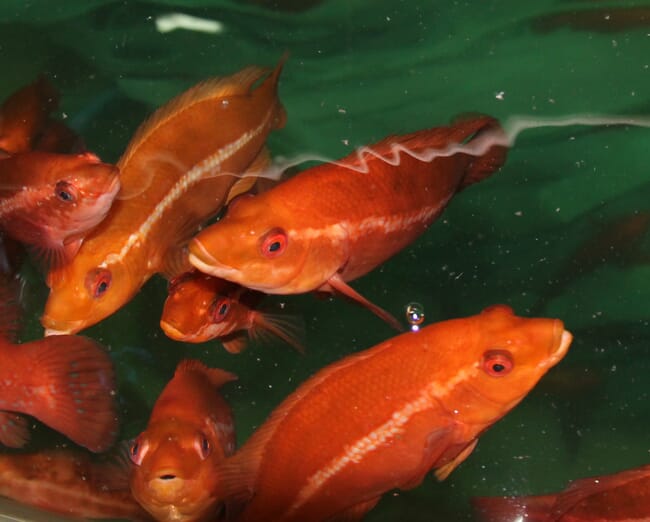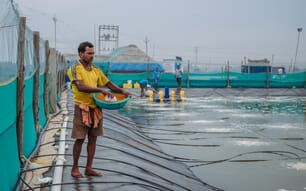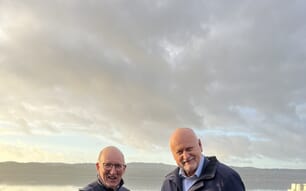
Farmed Ballan wrasse are subject to outbreaks of Aeromonas salmonicida in hatcheries © SAIC
The consortium - led by the University of Stirling’s Institute of Aquaculture and the salmon producer Mowi, with support from Otter Ferry Seafish, Ceva Ridgeway Biologicals and the Sustainable Aquaculture Innovation Centre (SAIC) - will explore the range of factors that determine the best possible conditions for delivering vaccinations against Aeromonas salmonicida, a bacterium which can cause potentially fatal outbreaks of disease in cleaner fish.
Ballan wrasse currently receive vaccinations against multiple health conditions at the hatchery stage. However, the group will look at alternative formulations of the vaccine, which could offer greater protection against disease. A core aim of the project is to determine the most effective composition of antigens to elicit the best immune response in juvenile fish.
The team will also consider the best timing and method of delivering the vaccine - ideally through immersion which can be easier to administer than injections - and assess and compare the way ballan wrasse react to each variable.
Dr Sean Monaghan, from the Institute of Aquaculture at the University of Stirling, said: “Enhancing vaccines for Aeromonas salmonicida could represent a significant step forward in the use of ballan wrasse in aquaculture. We know that prevention is better than cure and we are, therefore, working towards the development of more effective vaccine formulations and protocols that can be used by hatcheries and producers to improve fish welfare.
“By testing a range of conditions and variables, we are also aiming to identify the optimal process for delivering vaccinations, which can then be implemented across the sector to enhance disease prevention among ballan wrasse populations.”
The project could have a positive impact on the health and welfare of significant numbers of ballan wrasse produced for use across the Scottish aquaculture sector, with improvements on their ability to treat sea lice also enhancing the wellbeing and growth of large stocks of Atlantic salmon on fish farms.
Heather Jones, CEO at SAIC, said: “Ballan wrasse are a core element of our sector-wide efforts to sustainably tackle the challenge of sea lice and vaccinating them against disease is essential for long-term success. This latest project adds to the range of valuable collaboration projects exploring best practice for cleaner fish, which is a growing focus for both fish farmer and academic partners. Through knowledge-sharing and innovation, we hope to ultimately support the increased use of more sustainable sea lice treatments that will benefit the entire sector.”
Dougie Hunter, technical director at Mowi, said: “Ballan wrasse alongside lumpfish are excellent cleaner fish and a natural solution to effectively manage sea lice on our salmon. For us to give these fish the best environment and welfare, we must protect them again stress and disease, including infection caused by Aeromonas salmonicida, which can be observed in wrasse from an early stage. At Mowi we are committed to ensuring the best fish welfare at all our facilities and for our new cleaner fish hatchery in Anglesey, and that includes proven disease prevention tools such as vaccines. Mowi’s collaboration with Scotland’s leading fish health and vaccine experts and SAIC will be vital in finding the best vaccination strategies to enhance wrasse health protection.”


